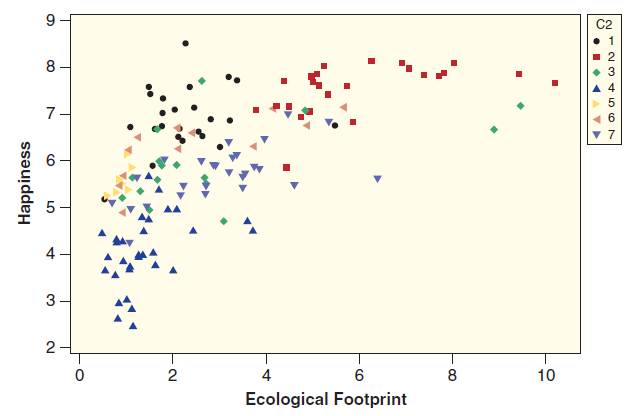The website TED.com offers free short presentations, called TED Talks, on a variety of interesting subjects. One
Question:
Figure 2.57

(a) Does there appear to be a mostly positive or mostly negative association between these two variables? What does that mean for these two variables?
(b) Describe the happiness and ecological footprint of a country in the bottom left of the graph.
(c) Costa Rica has the highest Happiness index. Find it on the graph and estimate its ecological footprint score.
(d) For ecological footprints between 0 and 6, does a larger ecological footprint tend to be associated with more happiness? What about for ecological footprints between 6 and 10? Discuss this result in context.
(e) Marks believes we should be working to move all countries to the top left of the graph, closer to Costa Rica. What attributes does a country in the upper left of the graph possess?
(f) This graph shows a third variable as well: region of the world. One way to depict a categorical variable on a scatterplot is using different colors or shapes for different categories. The code is given in the top right, and is categorized as follows: 1 = Latin America, 2 = Western nations, 3 = Middle East, 4 = Sub-Saharan Africa, 5 = South Asia, 6 = East Asia, 7 = former Communist countries. Discuss one observation of an association between region and the two quantitative variables.
(g) If the goal is to move all countries to the top left, how should efforts be directed for those in the bottom left? How should efforts be directed for those in the top right?
Step by Step Answer:

Statistics Unlocking The Power Of Data
ISBN: 9780470601877
1st Edition
Authors: Robin H. Lock, Patti Frazer Lock, Kari Lock Morgan, Eric F. Lock, Dennis F. Lock





